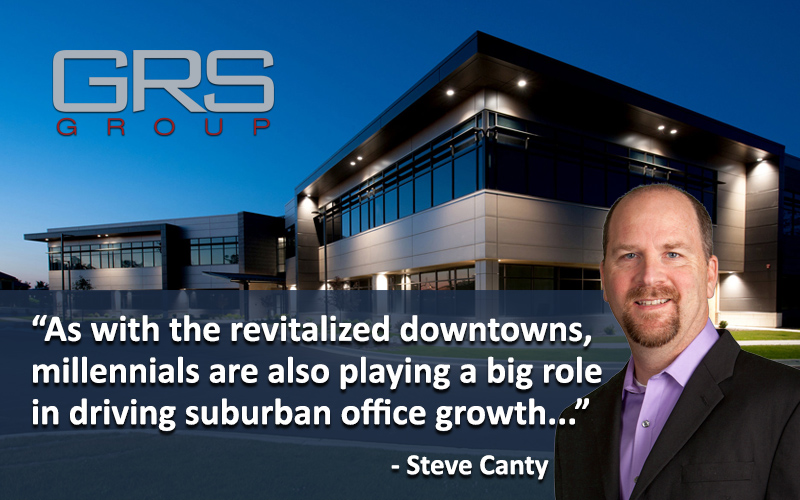
Steve Canty
Director, GRS Group
(858) 433-0441
[email protected]
Overall commercial real estate pricing increased seven percent year over year as of November in 2018, according to a recent Real Capital Analytics report, showing that the industry’s value didn’t decrease last year, despite worries about its growth cycle ending.
Two real estate sectors had the biggest gains, rising nine percent. It should be no surprise that one of them was multifamily, which has continued its strong performance since the recession.
It might raise some eyebrows, though, that the other leader was the suburban-office sector, which has bounced back considerably over the last several quarters. This has taken place despite an influx of capital going into CBDs, investing in live/work/play environments sought after by both millennials and older generations looking to downsize from the suburbs.
But like the revitalized downtowns, millennials are also playing a big role in driving suburban office growth. Since many in this age group are having children, they’re pursuing more space that suburban housing offers, along with better school systems and larger recreation areas.
However, they’re also expecting the dining, shopping and walkability that one can find in a more urban locale. As a result, employers have followed the population, and suburban offices are changing to look a lot more like their counterparts in city centers, with increased nearby amenities. In cities like Atlanta, we are seeing more mixed-use developments near working environments. And since the headquarters of most major Fortune 500 companies are already located in suburban locales, this shift doesn’t mean a major corporate displacement.
From an investment standpoint, this trend has reportedly made a significant difference. As of May, according to National Real Estate Investor, reporting RCA data, suburban office values have actually outperformed assets in CBDs for three years now, with prices increasing in suburbs and falling in city centers and corresponding higher yields.
In Chicago, for example, asking rents are increasing in the suburbs, according to a Colliers International report (download here). Spaces are primarily going to mid-sized tenants, looking for 10,000 square feet and 50,000 square feet. Developers are also constructing build-to-suit facilities for companies, though the area has not gotten to the stage of speculative construction, according to Colliers.
But there are likely plenty of outdated suburban office complexes nationwide ripe for redevelopment into thriving mixed-use settings.

